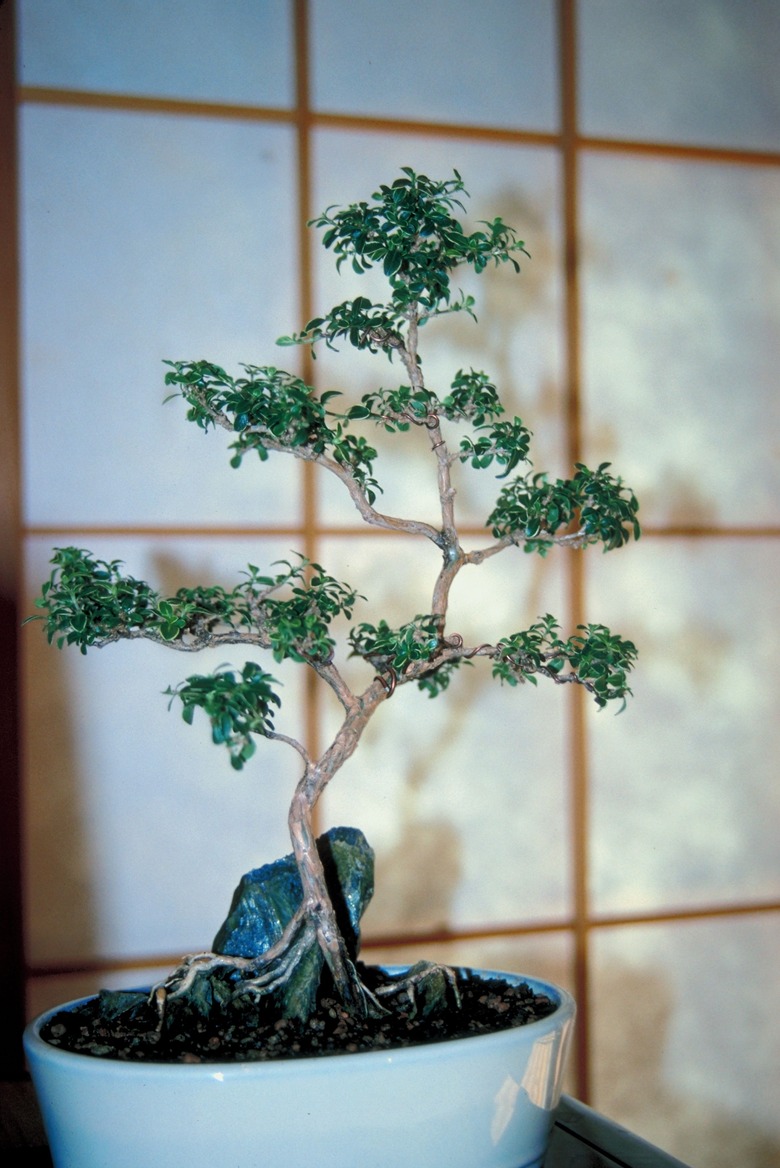How To Care For A Serissa Bonsai (Tree Of A Thousand Stars)
Step 1
Purchase a young Serissa foetida plant from a nursery that is preparing the plant for use as a bonsai plant. The roots of these plants will be better suited for the small containers that they will be kept in.
Step 2
Move the Serissa bonsai, still in its training pot, to a humidity tray in an area where the temperature will not dip below 45 degrees Fahrenheit. Place it in a spot that receives a fair amount of sunlight. An east or west facing windowsill is an ideal spot. The plant will most likely exhibit signs of stress when it is moved to a new area. If it is properly taken care of, it will become acclimated to its new location.
Step 3
- Purchase a young Serissa foetida plant from a nursery that is preparing the plant for use as a bonsai plant.
Step 4
Water the Serissa bonsai thoroughly when the soil around the plant has almost completely dried out. Once the water begins to drain out of the bottom of the pot, your plant has been watered enough. Your Serissa bonsai should never be swimming in puddles of water. Most Serissa bonsai plants only need to be watered every few days. If the leaves of your plant turn brown and crispy, it needs water. If they turn yellow, you are over watering your bonsai.
Step 5
Feed the Serissa bonsai plant liquid bonsai feed every other week in the warmer months and once per month during the colder months. Only feed the plant when the compost is moist.
Step 6
- Water the Serissa bonsai thoroughly when the soil around the plant has almost completely dried out.
- If the leaves of your plant turn brown and crispy, it needs water.
Step 7
Shape your Serissa bonsai plant by pruning, wiring and pinching the plant. Decide on the shape before you start. This shape should be somewhat similar to the natural shape of the plant. Use wiring to guide the limbs of the tree and use a concave cutter to prune limbs. Pinching off the ends of the foliage will help side buds to develop, ultimately creating a bushier plant.
Step 8
Set your Serissa bonsai plant outside for a month or two in the summer of every year. Again, the temperature must stay above 45 degrees Fahrenheit. Make sure it is getting a fair amount of sunlight, and remember to water the plant if it doesn't rain.
Step 9
- Shape your Serissa bonsai plant by pruning, wiring and pinching the plant.
- Make sure it is getting a fair amount of sunlight, and remember to water the plant if it doesn't rain.
Step 10
Move your Serissa bonsai plant to a new pot every couple of years. This should be done in the spring in order to speed up recovery of the root system.
